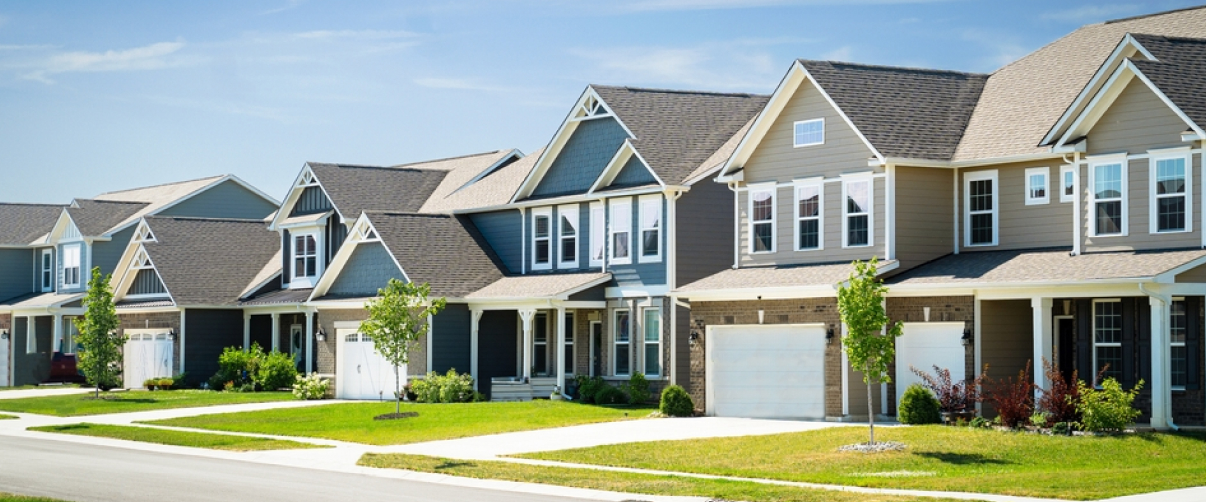In recent years, a noticeable shift has occurred in residential preferences. Many individuals and families are opting to leave the bustling city life behind in favor of the tranquility of the suburbs. This trend raises the question: What makes suburban living so appealing that people are willing to trade urban conveniences for a suburban lifestyle?
Suburb vs. City: Why More People Are Choosing Suburban Living Over Urban Hustle

The Allure of Space and Comfort
One of the most significant draws to suburban living is the promise of more space. Suburbs typically offer larger homes with expansive yards, providing ample room for families to grow and thrive. In contrast to the cramped apartments and limited living spaces often found in cities, suburban homes come with the added benefits of basements, garages, and private outdoor areas. These features not only enhance the quality of life but also offer opportunities for hobbies, hosting gatherings, and future expansions.
Suburban living appeals due to its expansive spaces, tranquility, and close-knit communities. The availability of space allows for a more relaxed lifestyle, free from the confines of high-rise living and the constant hustle of city streets.
A Peaceful Environment
The suburbs are synonymous with peace and quiet. Away from the incessant noise of traffic, honking horns, and the general clamor of city life, suburbs provide a serene environment where residents can relax and unwind. This tranquility is invaluable for those seeking a respite after a long day at work or for families desiring a calm setting to raise children.
Suburban areas offer a peaceful environment, with reduced noise levels compared to cities, allowing for relaxation and focus. The ability to enjoy evenings on the porch, listen to the sounds of nature, or simply sleep without the interruption of sirens contributes significantly to overall well-being.
Strong Sense of Community
Community is at the heart of suburban life. Neighborhoods are often tight-knit, with residents participating in local events, schools, and activities that foster connections among families. This sense of belonging can be comforting and supportive, especially for those with young children.
Their neighborhoods foster a strong sense of community, with residents often engaging in local activities and events, enhancing social connections. From community barbecues to local sports leagues, the suburbs provide numerous opportunities to build lasting relationships.
Quality Education Opportunities
For families, access to quality education is a top priority. Suburban areas are frequently home to highly-rated schools with excellent resources and programs. The focus on education in these communities ensures that children receive the support and opportunities they need to succeed academically.
Education is another key benefit, as suburban areas typically have excellent schools, offering more educational opportunities for children. Proximity to top schools not only benefits students but can also enhance property values within the community.
Safety and Security
Safety is a crucial consideration when choosing a place to live. Suburbs are often perceived as safer than their urban counterparts, with lower crime rates and a greater sense of security. This environment allows residents to feel more at ease in their daily lives, whether they’re walking the dog at night or letting children play outside.
Safety is crucial for homebuyers, and suburban areas generally have lower crime rates than cities. This peace of mind is a compelling factor for many when deciding where to settle down.
Affordability and Value
While city living comes with its own set of advantages, it is often accompanied by a high cost of living. Housing, groceries, utilities, and taxes can be significantly more expensive in urban areas. In contrast, suburban living can offer better value for money, with more affordable housing options and lower daily expenses.
Although city living can be costly, the suburbs offer better value for money in terms of housing and daily expenses. This financial benefit allows residents to invest in other areas of their lives, such as travel, education, or hobbies.
Access to Green Spaces and Outdoor Activities
Suburbs are renowned for their abundance of parks, trails, and recreational areas. These green spaces encourage an active lifestyle, providing venues for jogging, biking, picnics, and sports. The connection to nature and availability of outdoor activities can greatly enhance physical and mental health.
The suburbs also provide abundant green spaces and opportunities for outdoor activities like jogging, picnics, and sports, promoting an active lifestyle. This access to nature is a stark contrast to the concrete landscapes of cities.
Balancing Proximity and Convenience
One might assume that moving to the suburbs means sacrificing the conveniences of the city. However, many modern suburbs are strategically located to offer easy access to urban amenities. With well-planned infrastructure, residents can enjoy the tranquility of suburban life while still being a short drive away from shopping centers, healthcare facilities, dining, and entertainment options.
A balanced approach of choosing a suburban area close to the city could offer the best of both environments. This proximity allows for a harmonious blend of peaceful living without completely disconnecting from the vibrancy of the city.
The Urban Trade-Offs
While cities are hubs of cultural activities, career opportunities, and nightlife, they come with their own set of challenges. High living costs, smaller living spaces, noise, pollution, and higher stress levels are common aspects of urban living. For many, these drawbacks outweigh the benefits.
Urban living offers accessibility to work, cultural activities, and public transportation, but comes with higher living costs, smaller living spaces, noise, and potential pollution issues. The decision to move to the suburbs often stems from a desire to escape these stressors in pursuit of a higher quality of life.
Conclusion
The choice between city and suburban living is a deeply personal one, influenced by individual lifestyles, career goals, family considerations, and personal preferences. However, the trend toward suburban living highlights a growing appreciation for space, community, affordability, and a peaceful environment.
Embracing suburban living means enjoying more space, peace, an active lifestyle, and a strong community, making it a sound investment in your family’s future. As more people seek a balanced life that accommodates both professional ambitions and personal well-being, the suburbs present an attractive option that continues to draw new residents away from the urban hustle.
Whether it’s the allure of a backyard for summer barbecues, the appeal of quiet streets, or the promise of better schools for children, the suburbs offer a compelling alternative that aligns with the desires of many modern families. As this shift continues, we may see the suburbs evolving to meet the needs of their growing populations while still maintaining the qualities that make them so desirable.











